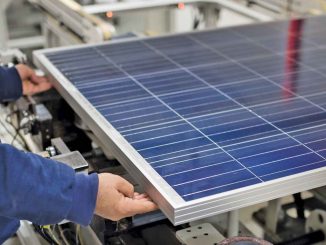
With a growing focus on energy resilience, there is pressure to incorporate energy efficient technologies in existing and new infrastructure. Passive design features that maximise energy efficiency can be combined with on-site renewable energy generators to reduce infrastructural energy needs. Several technological advancements are taking place in this space as the world moves towards self-sufficient, zero energy consuming spaces.
To this end, Andluca Technologies aims to create self-powered smart windows with transparent solar cells that absorb and harvest near-ultraviolet (UV) light and selectively control the transmission of visible light and infrared heat into a building.
The company was founded recently by Dr Yueh-Lin (Lynn) Loo, director, Andlinger Center for Energy and the Environment, Princeton, and Nicholas Davy, a doctoral student at Princeton. The technology attempts to generate electricity and lower the heating and cooling costs of a building simultaneously.
The technology involves two main components – a transparent solar cell and an electrochromic window that can change its light transmission properties in response to a pulse voltage. This property enables the window to permit or block infrared light depending on the requirement of the building, thus modifying the heating or cooling level as desired.
The transparent near-UV solar cells can be built on glass or plastic, making it ideal for use as a laminate that can be applied on any existing window. This feature sets them apart from solar panels, which absorb UV, visible as well as infra-red rays, and are opaque in nature. Typically, windows are designed to block UV light with a special coating as these are harmful for the skin. These solar cells absorb the UV spectrum of light instead of the visible or infrared spectrum, thereby utilising the part of light that is blocked. However, it results in low power output, which can be overcome by increasing the area of a cell. The windows provide sufficient area for generating adequate current to operate the smart window as well as other small electronic devices.
According to Andluca Technologies, the smart windows are capable of powering internet of things (IoT)-type of devices such as small microphones or amplifiers that facilitate communication with other smart devices and gadgets. The company, therefore, aims to target the residential, automobile and commercial segments. A practical demonstration with 0.2-10 square cm has been performed, which reflects the practical applicability and future scalability of the technology.
The final device costs could be high owing to the costs associated with manufacturing equipment, materials production, research and development, and talent acquisition. Moreover the company expects revenues from solar-powered indoor and outdoor devices, and self-powered smart window technologies. Partnerships with IoT device makers and smart window manufacturers may also increase revenues, which could offset the high manufacturing cost. For now, the company is growing via Small Business Innovation Research grants from the US government and is aiming for $1 million in funding. It plans to seek additional investment in the fourth quarter of 2017. According to the company’s plans, a sales channel will be developed through online pre-orders as well as business-to-business partnerships, and future marketing activities would be performed using crowdfunding of unique products and prototype development through partners.
The near-UV solar cells, combined with electrochromic windows, can help conventional building integrated photovoltaic (BIPVs) to enhance passive building features for increased occupant comfort. BIPVs replace the construction material of facades, roofs, walls, glazing, etc. to generate electricity, whereas transparent solar cells focus on the windows and walls of a building, thus increasing its green features. The new technology is expected to be used as flexible PV sheets that can be pasted on any sunlight-receiving surface, preventing special structural changes or modifications in buildings.
The technology is likely to find a wide market in growing economies such as India and China, which are focusing on improving their energy efficiency. In the South Asian region in particular, there is a strong requirement for cooling in the summer and heating in the winter. Apart from reducing greenhouse gas emissions, this technology can reduce electricity consumption for meeting cooling and heating requirements.
The near-UV solar cell technology is currently at the prototype stage and has not yet been implemented on a large scale. As such, there is lack of practical experience for evaluating its on-site benefits. Moreover, the declining costs of solar panels pose severe competition to the new technology. However, if the costs of the latter decrease and commercial viability improves, this self-powered smart windows technology is likely to find vast application in the energy efficiency domain.



